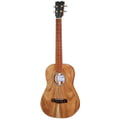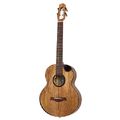When it comes to choosing a ukulele, the options can seem overwhelming. With so many different models, sizes, and features to consider, finding the right fit for your playing style can be a daunting task. In this article, we'll guide you through the process of exploring ukulele models and help you narrow down your options to find the perfect instrument that suits your preferences and needs.
Understanding Ukulele Models
Before diving into the specifics of different ukulele models, it's essential to understand the basic categories and sizes of ukuleles:
1. Soprano: The soprano ukulele is the smallest and most traditional size, known for its bright and cheerful sound. It's an excellent choice for beginners and players with smaller hands.
2. Concert: The concert ukulele is slightly larger than the soprano and offers a fuller, more resonant tone. It's a popular choice for intermediate players and those looking for a balance between size and sound.
3. Tenor: The tenor ukulele is larger than the concert and soprano sizes, with a deeper and richer sound. It's favored by advanced players and performers who appreciate its extended range and versatility.
4. Baritone: The baritone ukulele is the largest size and features a deeper, more guitar-like tone. It's ideal for players who prefer a lower pitch and a more substantial instrument.
Factors to Consider
When exploring ukulele models, consider the following factors to find the right fit for your playing style:
Sound Preference: Think about the type of sound you prefer—bright and cheerful, warm and mellow, or deep and resonant. Choose a ukulele model that matches your sonic preferences and complements your musical style.
Playing Comfort: Consider the size and shape of the ukulele body and neck and how they feel in your hands. Choose a model that feels comfortable to hold and play, especially if you have specific ergonomic requirements or preferences.
Budget: Determine your budget and explore ukulele models that offer the best value for your money. Keep in mind that higher-priced models often feature better materials, craftsmanship, and sound quality, but there are also excellent options available at lower price points.
Intended Use: Think about how you plan to use the ukulele—whether it's for casual strumming at home, performing on stage, recording in the studio, or traveling on the go. Choose a model that suits your intended use and meets your practical needs and preferences.
Exploring Different Brands and Models
Once you've identified your preferences and priorities, it's time to explore different ukulele brands and models to find the right fit. Research reputable brands known for their quality craftsmanship, excellent sound, and reliable performance. Read reviews, watch demo videos, and visit music stores to try out different ukuleles in person and see which ones resonate with you.
Conclusion
Exploring ukulele models is an exciting and rewarding process that allows you to find the perfect instrument that suits your playing style and preferences. By considering factors such as sound preference, playing comfort, budget, and intended use, you can narrow down your options and make an informed decision. Whether you're drawn to the bright sound of a soprano ukulele, the warm tone of a concert ukulele, or the deep resonance of a tenor or baritone ukulele, there's a model out there that's just right for you. So take your time, do your research, and find the ukulele model that inspires you to make beautiful music!
With a better understanding of ukulele models and the factors to consider when choosing the right fit for your playing style, you'll be well-equipped to find the perfect instrument that brings joy and inspiration to your musical journey. Happy strumming!


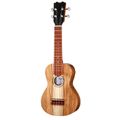
 Thomann Soprano Ukulele Standard
Thomann Soprano Ukulele Standard
 Harley Benton Ukulele DIY-Kit Sopran
Harley Benton Ukulele DIY-Kit Sopran
 Cascha Premium Soprano Uku Solid Top
Cascha Premium Soprano Uku Solid Top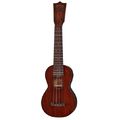
 Martin Guitars 0 Soprano Ukulele
Martin Guitars 0 Soprano Ukulele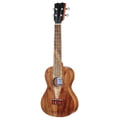


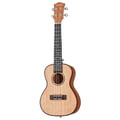
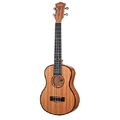


 Flight Victoria CEQ-A Tenor
Flight Victoria CEQ-A Tenor
 Kala KA-SMH-TG-CE Tenor Ukulele
Kala KA-SMH-TG-CE Tenor Ukulele